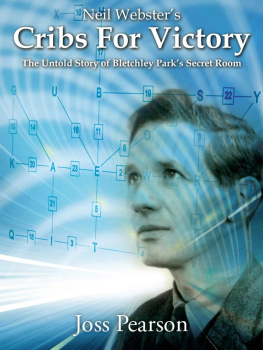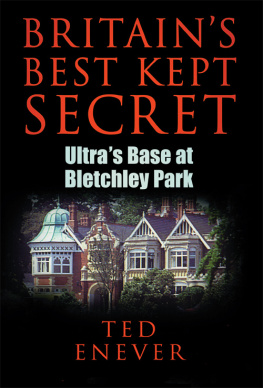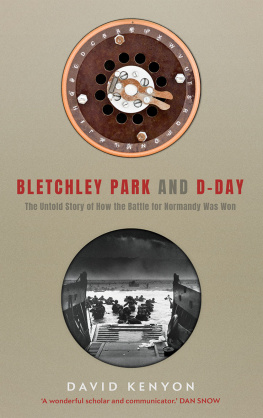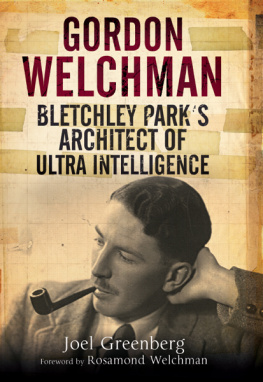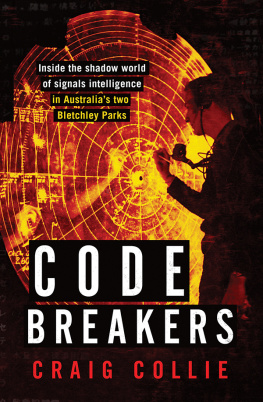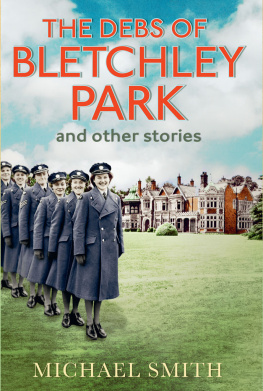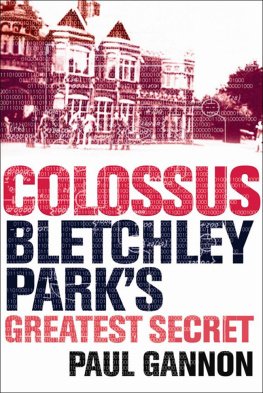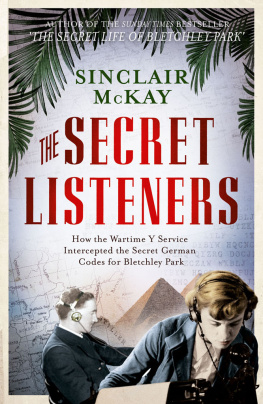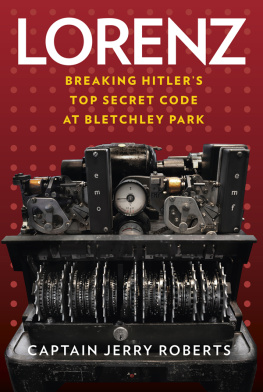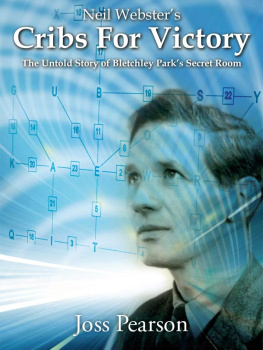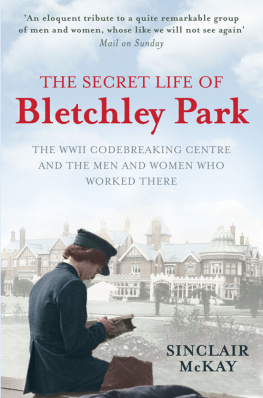Cribs For Victory Crown Copyright 2011
Additional text and photographs Joss Pearson 2011
All rights reserved. No part of this publication may be reproduced or transmitted in any form or by any means, electronic or mechanical, including photocopying, recording, or any information storage or retrieval system, without prior permission in writing from the publisher. The right of Neil Webster and Joss Pearson to be identified as the authors of this work has been asserted by them in accordance with the Copyright, Designs and Patents Act 1988.
British Library Cataloguing in Publication Data.
A catalogue record for this book is available from the British Library.
ISBN 978-0955954177
Published by
Polperro Heritage Press,
Clifton-upon-Teme, Worcestershire
WR6 6EN
United Kingdom
www.polperropress.co.uk

Cover design
Steve Bowgen
From Satire III
by
John Donne
though truth and falsehood be
Near twins, yet truth a little elder is;
Be busy to seek her; believe me this,
Hes not of none, nor worst, that seeks the best.
To adore, or scorn an image, or protest,
May all be bad; doubt wisely; in strange way
To stand inquiring right, is not to stray;
To sleep, or run wrong, is. On a huge hill,
Cragged and steep, Truth stands, and he that will
Reach her, about must and about must go,
And what the hills suddenness resists, win so.
This book is dedicated to Neil Webster who was always in pursuit of truth.
Foreword
T his book is published posthumously more than a quarter of a century after it was first written by my father, Major Neil Leslie Webster, and more than 20 years after his death. It is his first-hand account of his wartime life from 1939 to1946 and his own and his colleagues work in intelligence. He had been recruited by MI8 in April 1940, lifted out of his enlistment in the London Scottish to join the early members in Caxton Street of the Central Party. It was in Caxton St, as he describes in this book, that the idea was born of fusion integrating the knowledge from signals intelligence with decodes from cryptography. The Central Party moved to Harpenden, and the unit my father worked in was from then on known as the Fusion Room - continuing in Beaumanor and finally in Bletchley Park (BP) where, as a Major, he was liaison officer between signals intelligence and cryptographers, in what is now known as SIXTA. The Fusion Room in BP was the central unit where decrypted German messages obtained from Hut 6 were compared with the corresponding data extracted by the log readers from the daily radio traffic between enemy stations, thus enabling a complete wartime picture of the enemy order of battle to be constructed. The Fusion Room grew from a small beginning in 1940 until, by the end of the war at BP in 1945, it numbered over two dozen men and women, including a few American army officers who had arrived in 1943. Because my dads role was liaison between traffic analysis and cryptography, he was centrally involved in the search for cribs short pieces of enciphered text where the meaning is either known or can be guessed, which allow the whole cipher to be broken. He had a roving brief, to help Hut 6 people to break ciphers, especially Enigma so that the information could reach Hut 3 intelligence. His book describes this intensive search in detail, the intellectual and technical challenge, the personal stories, the setbacks and the triumphs.
Security clearance and permission to publish this material was only given in 2010, at the familys request. In this foreword I tell the story of how this occurred, from a daughters point of view drawing both on childhood recollections and on my recent adult involvement in the books publication.
I was born in December 1941 in the middle of World War 2, in Loughborough. When I later asked my mum, Why Loughborough? I was told that we were living at the time in Woodhouse Eaves in a rented cottage, because Dad was working nearby; later they said working in Beaumanor. All I remember of Woodhouse Eaves, being under three years old when we left, is the cottage garden where I played with my older brother Andrew and a white windmill on a hill and Dad in uniform, occasionally present. My mother, born a Heygate, relates in her unpublished autobiography how Woodhouse Eaves turned out coincidentally to be the seat of a high-class branch of the Heygate family and how her beloved grandmother (also a Heygate), who had raised her and was living with them at the time, began proudly boasting in the village about my grandson-in-law, you know, in intelligence very hush-hush - until Dad expressed concern, whereat she removed herself back to Cheshire.
After Woodhouse Eaves, Mum and us kids lived for a time in 1943 at our Webster grandparents in Cheltenham, with visits from Dad whose unit had moved to Bletchley Park. Apparently he rode a motorbike down from BP - which must have been quite a sight since Dad was a small man, dashing and handsome with a charming quizzical smile, farseeing Scottish blue eyes and unruly hair. Even in wartime, Cheltenham was pretty grand, with only occasional soldiers marching past and us kids joyfully shouting Got any gum, chum? while hanging on the gate, so that the GIs showered us with packets of gum wealth beyond our dreams! From the grandparents we learned more about family history. Dad too had been raised mainly by grandparents. He was the favourite grandson of the Indian novelist Flora Annie Steel, and a large portrait of her and many Indian curios were in the house. Dads mother was Flora Annies daughter known to us as Aunt Mabel, and his father, Uncle Jack Webster, was retired from a lifetime of civil service in India, winner of the Star of India.
Then in 1944 we moved to Bletchley, to a 2-up 2-down dark little house in Fenny Stratford. I remember it very well. By this time there were three of us, elder brother, baby brother, and me. A neighbours teenage daughter, Joy, occasionally minded and played with us. The back of the house had a straight strip of garden with a path down the middle, leading to a field hedge, and beside the path was the air-raid shelter, dank and smelly, and in the field hedge were blackberries and beyond, a bull. We three slept in a little room at the top of the steep stairs, with tin trays tied around our cots to protect against shrapnel or flying glass. In the back garden was a bucket of sand, as Joy said for incendiaries. I hardly knew about the war. Dad cycled to work nearby in the Bletchley Park which was apparently a Hoover factory though we kids knew the grown-ups didnt believe this. I dont remember ever visiting the Park, but Mum used to push the big pram with us up the road that went under the railway arch towards BP. And we used to collect blackberries from the banks on the way.
Occasionally in the evenings tall men and clever women called at the little house for supper or drinks and we kids were banished upstairs. I remember the American, Bill Bijur who called the flowers round the weedy air-raid shelter parpees however much I insisted they were poppies. Dad liked the Americans - he had spent some years in the States before the War. On one evening party occasion (I was told later) I came to the top of the stairs and winningly said Come on up soldier to a visitor to the consternation of parents and the delight of the invitee! Apparently on another evening, when Alan Turing was there for supper, Andrew was making a fuss and Malcolm Spooner, the mathematician who was also present, got down on his knees to talk to him. The world looks pretty alarming from down here, you know! he said. By 1945, my brother and I were exploring Fenny the canal and timber yard (forbidden territory) and the sweet shop up a lot of steps on the main crossroads to Bletchley (also forbidden) and the little green patch nearby. My brother remembers German prisoners of war working on the road outside our house. One of them pointed his shovel at Andrew and made gun-firing noises for a joke but Andrew set up a terrified scream bringing mum running. Once, out the back, a German fighter plane, astray over Bletchley, buzzed the house apparently chasing me up the path and I ran to the kitchen in terror. Otherwise, I remember the VE Day party and fete, when we kids were dressed up as elves and processed excitedly around Fenny with quite a crowd.

